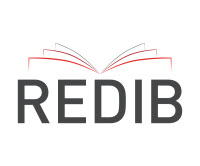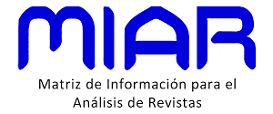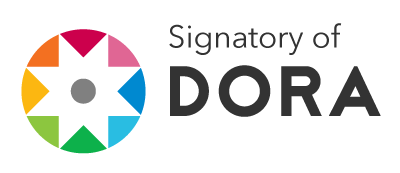Catálogos de bibliotecas y mediación
¿Qué papel pueden desempeñar los catálogos en el siglo XXI?
Resumen
El artículo presenta una reflexión sobre el papel de los catálogos en la realidad contemporánea. El análisis de los catálogos como instrumentos de mediación entre los fondos bibliotecarios y los usuarios se realiza partiendo del nacimiento de lo que se considera la teoría catalográfica moderna, a mediados del siglo XIX, para centrarse después en las consecuencias de la llegada de la tecnología digital sobre los catálogos y su papel.
El análisis se centra en algunos factores considerados relevantes, como el aumento de la información y de los recursos bibliográficos, la diferenciación de los usuarios, la presencia de otras herramientas mediadoras entre los usuarios y la información y los recursos. Por último, se proponen algunas reflexiones sobre el posible posicionamiento de los catálogos en el ecosistema digital transformado.
Descargas
Citas
Bianchini, C. (2007), Catalogazione. In Guerrini M., et alii (Eds), Biblioteconomia: Guida classificata. Milano: Editrice Bibliografica.
Borgman, C.L. (1996). Why are online catalogs ‘still’ hard to use?, Journal of the American Society for Information Science, 47(7), pp. 493-503.
British Museum (Ed.). (1850). Report of the Commissioners appointed to inquire into the constitution and government of the British museum; with minutes of evidence. London, William Clowes and sons, 1850.
Galeffi, A. (2017). Se il catalogo parlasse, lo capiremmo? Cinque assiomi della comunicazione catalografica. AIB studi, 57(2), pp. 239-252. doi: https://doi.org/10.2426/aibstudi-11648.
Gorman, M. (2000), Seymour Lubetzky uomo di principi. Biblioteche oggi 28(6), pp. 6-11.
Grant, N. (2024). Google Takes the Next Step in Its A.I. Evolution. The New York Times, 14 may, Retrieved from : https://www.nytimes.com/2024/05/14/technology/google-artificial-intelligence-products.html?partner=slack&smid=sl-share
Great Britain House of Commons Select committee on public libraries. (Ed.). (1849). Report from the Select Committee on public libraries; together with the proceedings of the Committee, minutes of evidence, and appendix. Ordered by The House of Commons, to be Printed, 23 July 1849.
Great Britain House of Commons Select committee on public libraries. (Ed.). (1850). Report from the Select Committee on public libraries; together with the proceedings of the Committee, minutes of evidence, appendix, and index. Ordered by The House of Commons, to be Printed, 1 august 1850.
Hoffman, G.L. (2009). Meeting users’ needs in cataloging: what is the right thing to do?, Cataloging & classification quarterly, 47(7), pp. 631-641. doi: https://doi.org/10.1080/01639370903111999.
Joudrey, D.N., Taylor, A.G. and Miller, D.P. (2015), Introduction to cataloguing and classification, 11th ed. Santa Barbara, Cal.: Libraries Unlimited.
Marchitelli, A., and Frigimelica, G. (2012). OPAC. Roma: Associazione italiana biblioteche.
Oliver, C. (2021). Introducing RDA. A Guide to the Basics after 3R. 2nd ed. Chicago: ALA.
Osborn, A.D. (1941). The crisis in cataloguing. The library quarterly, 11(4), pp. 393-411.
Quaquarelli, M. (2022). Search behavior on University of Bologna discovery tool: a quantitative and qualitative analysis. Bibliothecae.it, 11(1), pp. 315-360. Doi: https://doi.org/10.6092/issn.2283-9364/15079
Sardo, L. (2021). Is cataloguing the ‘poor relation’? Some reflections. JLIS.it 12 (1), pp. 160-167. doi: https://doi.org/10.4403/jlis.it-12656
Serrai, A. (1980). Sistemi bibliotecari e meccanismi catalografici. Roma: Bulzoni.
Serrai, A. (1983). Biblioteche e cataloghi. Firenze: Sansoni.
Serrai, A. (1984). Dai loci communes alla bibliometria. Roma: Bulzoni.
Serrai, A. (1997). Profilo di storia della bibliografia. 7: Storia e critica della catalogazione bibliografica, ed. by Miggiano G. Roma: Bulzoni.
Tanselle, T.G. (1977). Descriptive Bibliography and Library Cataloguing. Studies in bibliography 30, pp. 1-56.
Weston, P.G. (2002). Il catalogo elettronico. Roma: Carocci.
Wilson, P. (1968). Two kinds of power: An essay on bibliographical control. Berkeley, University of California Press.
Derechos de autor 2024 Lucia Sardo

Esta obra está bajo licencia internacional Creative Commons Reconocimiento 4.0.







.jpg)




















